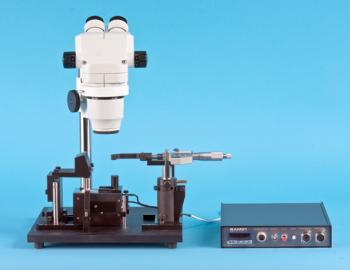SI-H Muscle Tester Basic
Basic research system for working with muscle tissue and individual fibers. Supports measurement of basic parameters with mechanical and optical registration.
- Overview
A study device called SI-H Standard Muscle Research combines mechanical and optical recording of whole muscles and dissected muscle fibers.
On a single-piece platform, it performs physical force measuring operations. With the basic system, a user can complete at least four research tasks:
- Studying the responses of intact muscles as well as those to stimulation and tetanus is made possible by measuring the mechanical characteristics of muscles that are contracting and relaxing.
- Contraction time, viscosity at 50% contraction, and other parameters are measured during a contraction.
- In order to assess the mechanical characteristics of muscle fibers, a linear motor must be connected to a control unit. These characteristics include sagging, isotonic relaxation, relaxation viscosity, vibration testing, post-load contractions, and eccentric contractions.
- Sarcomere lengths can be measured simultaneously using a laser diode.
Features:
- Small platform and cost-effective design.
- Collecting and analyzing data
- Controlled heating from 30 to 42 ºC and optional cooling to 5 ºC
- Design flexibility and modularity
- Construction with stainless steel (stainless steel, anodised aluminium, plastic)
- Mounting preparation accessory kit
- Tub has two chambers for preparation and oxygenating the perfusion solution
- Accessories include a stimulator, a thermostatic perfusion solution reservoir, a binocular microscope, and a vacuum system for changing solutions.
Accessories
- Cuvettes for perfusion and simultaneous optical detection
- Laser diode
- Software controlled stimulator
- Detachable binocular microscope (for mounting and dissection)
- Control panel to operate the system with your ADC
- Compatible with KG series mechanical sensors


